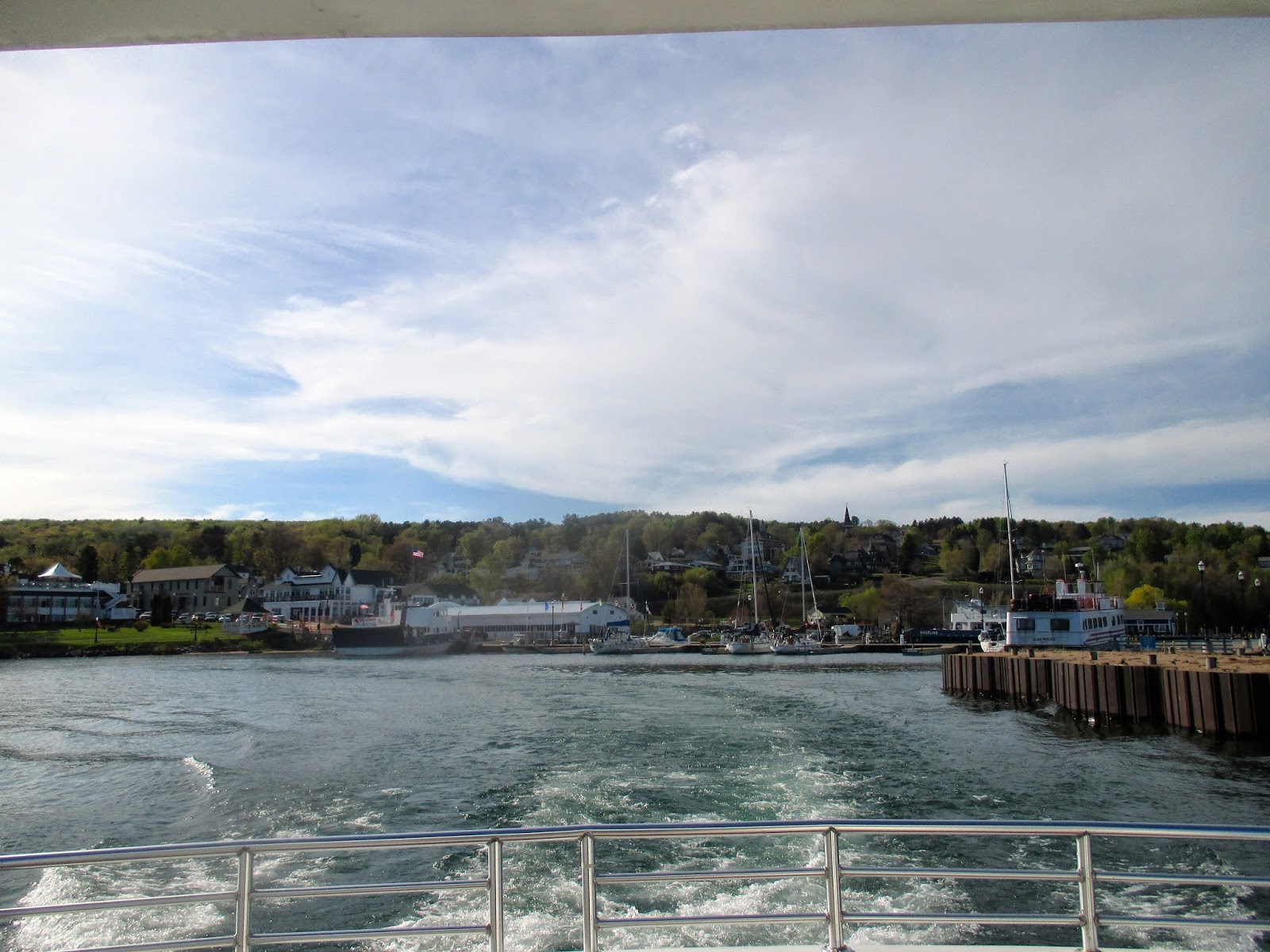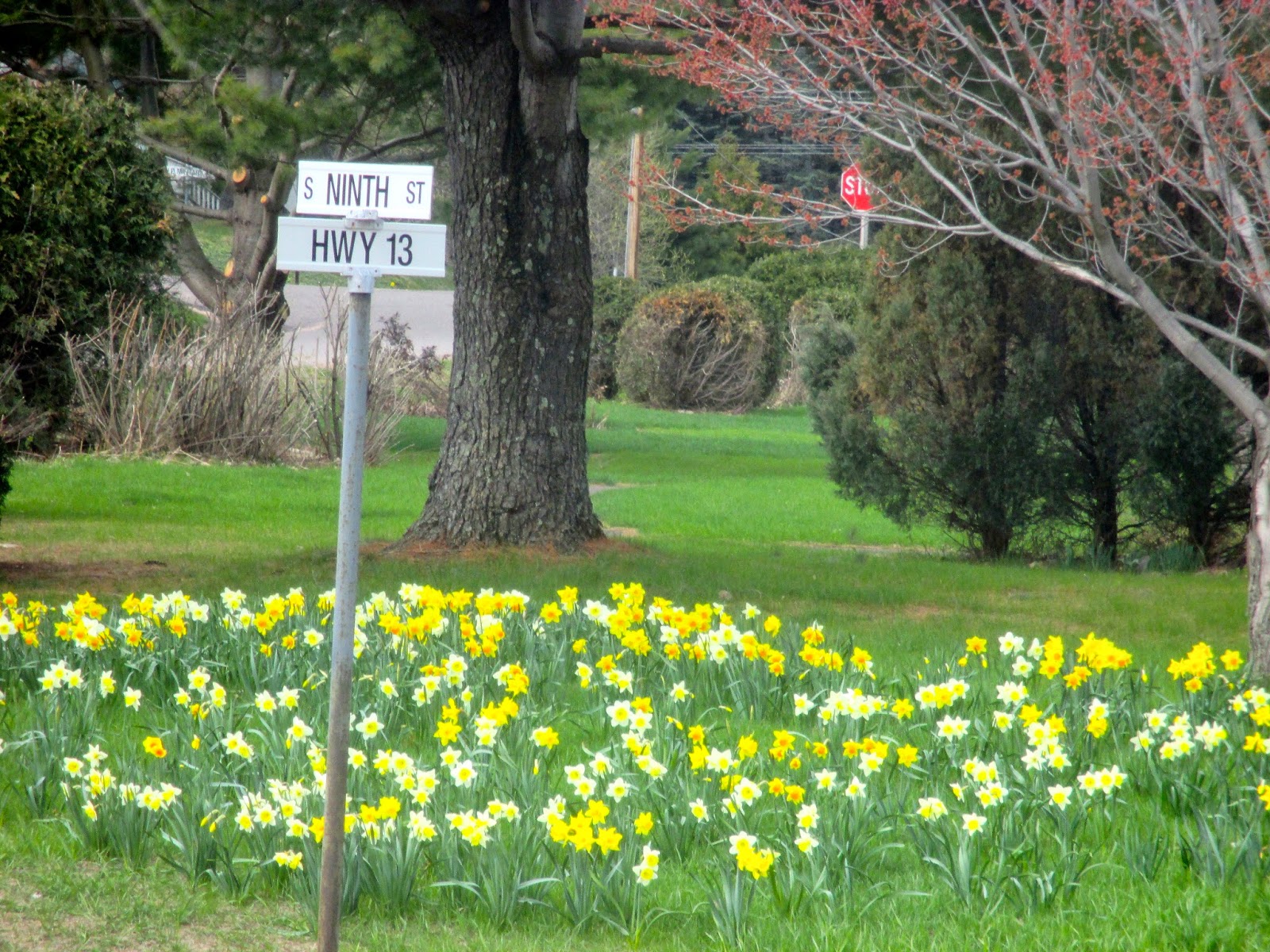 |
| 1. REMOVING THE TREE FROM THE POT, AND A GENEROUS HOLE DUG.. |
 |
| 2. GIRDLING ROOTS SHOULD BE CUT, OR SCARIFIED, WITH A SHARP KNIFE... |
 |
| 3. THE ORIGINAL ROOT COLLAR MUJST BE EXPOSED AND THE PROPER PLANTING LEVEL DETERMINED... |
 |
| 4. BACKFILL, NORMALLY WITH ORIGINAL SOIL, WELL WATERED IN BUT NOT COMPACTED... |
 |
| 5. ECESS SOIL REMOVED, MULCH APPLIED, STAKED IF NECESSARY... |
 |
| 6 NON-ABRASSIVE, NON-GIRDLING MATERIAL USED FOR ATTACHING TREE TO TWO STAKES |
Wednesday,9:00 AM. 57 degrees F, wind NW, breezy. The sky has a few clouds and it was very foggy early but has cleared. The humidity is down to 57% and the barometer has risen to 29.9". It is a beautiful spring day. The pack ice is still migrating into the channel, and the last ferry was cancelled yesterday evening due to the ice and fog. Pretty inconvenient for those caught on the wrong side of the water from their beds. The larger ferries are running now, and I am told that their hulls are not thick enough to challenge the ice without the possibility of being damaged.
The planting of the Bayfield Arbor Day Tree gave me the opportunity to take a series of photos on planting a large potted tree, and to write detailed planting instructions.
Most commercial wholesale nurseries now grow their trees in pots up until they are about 1.5" in DBH (diameter breast height) after which they are transferred to nursery rows. From a practical standpoint, this means that trees up to that size are more easily grown, stored, handled, transported, and planted than ever. Trees grown in pots can be easily drip-irrigated and fertilized, and are transferred into successively larger pots as they grow. Pots are, by-and-large, easier to handle than stock which is dug balled and burlapped or that is bare-root (bare-root trees are less expensive, but take more care to handle and plant). Growing trees in pots is practical and cost effective.
There are, however, some drawbacks to growing trees in pots; primarily that if a tree remains in a pot too long it will become pot-bound, with too dense and fibrous a root system and with roots that grow in a circular fashion at the perimeter of the pot, which can eventually girdle, or strangle the growing tree.
Additionally, potted plants are usually mulched with wood chips or compost, and over time this composted material decomposes into soil, which if not removed builds up around the trunk. These conditions can usually be remedied at planting. Plant the tree as follows:
1. Dig a generous hole, about half again as wide in diameter as the root ball of the tree to be planted. The bottom of the hole should be firm, so that the tree does not sink when planted and watered.
2. The depth of the hole is very important, and should be determined by removing the tree from the pot and finding the root flare of the tree, i.e., the support roots, like the shoulders as compared to the neck of a person. This is done by removing loose soil and mulch from around the base of the potted tree. If fibrous roots have grown up into this loose layer they should be rubbed or cut off.
3. Measure the height of the ball from the bottom to the root collar. This is the depth the hole should be. Place a board or a level shovel handle across the hole to measure the exact depth for the tree to be planted. It is always better to be an inch or two high than low.
4. Backfill the tree, being sure it is standing straight in the hole. It is usually preferable to use the original soil, unless it is heavy clay, hardpan, or sand, in which case good topsoil or compost should be added. Mixing the topsoil and subsoil excavated from the hole together, pulverizing it well, is usually sufficient. Water the backfilled tree well enough to get all the air pockets out of the soil, while keeping the tree straight.
5. Mulch the newly planted tree with wood chips or other compost, to a depth of no more than four inches. Keep mulch away from the trunk of the tree itself. The tree should be monitored for water, keeping the soil moist but not overly wet, as the roots need oxygen as well as moisture. Trees grown in the nursery are normally pruned properly, and only dead or damaged branches usually need to be pruned at planting time. Excessive pruning of healthy branches removes too many leaves, which the tree needs to produce energy to grow new roots.
6. If a tree is stable in the planting hole and is not in a windy location it may not need to be staked. If a tree is planted in a park or on a public street it should be staked to prevent children from pulling on the trunk, but trees actually grow better if they do not have to be staked. If the tree is to be staked, drive the stakes into the ground outside the diameter of the planting hole. Drive them straight and firm (there is a tool for driving stakes, or a sledge hammer may be used, with care) and to equal height, directly opposite each other. Attach the guy wires to the tree using a non-abrassive material or plastic ties made for the purpose. Do not use rope or other material that may rub the bark raw. Nothing should be wrapped tightly around the tree trunk as it will girdle the trunk as it grows. Stakes and guys should usually be removed after the first growing season. It is not necessary to fertilize a tree at planting, but it may be fertilized with a low-nitrogen, complete fertilizer or well composted manure the following growing season.
Plant Trees!
































































